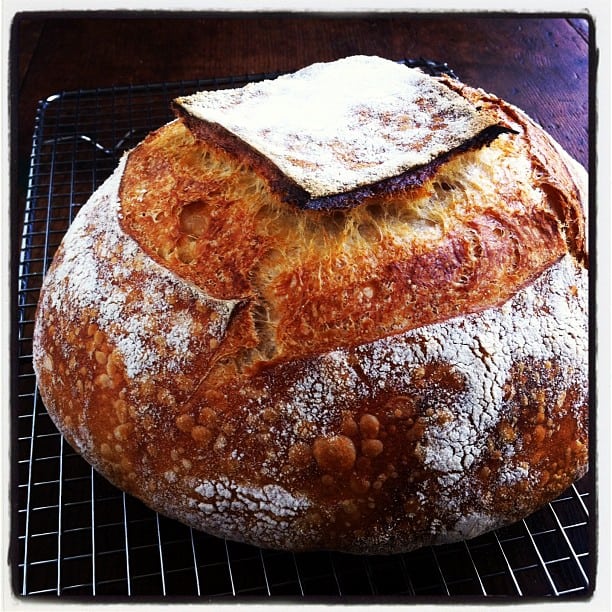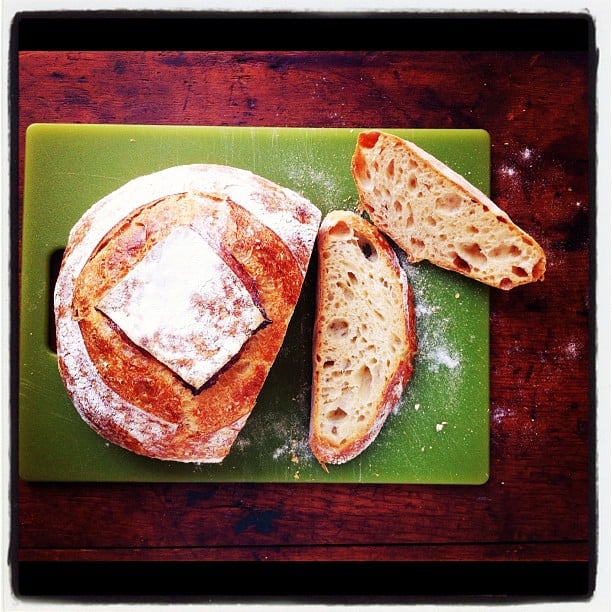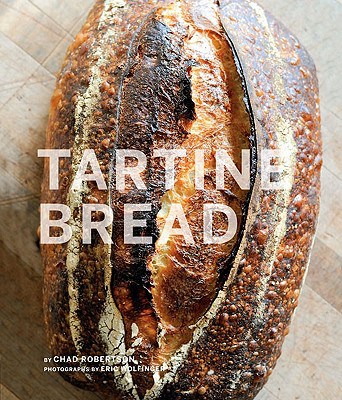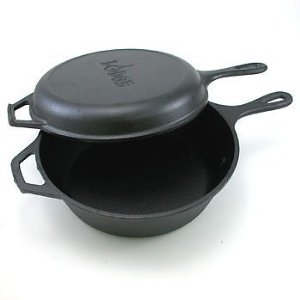
One of the best gifts I received this year was the gift of bread. No, I wasn’t given a loaf of bread, but I was given a tool that allowed me to bake the best bread of my life. This book:
I had the pleasure of visiting Tartine Bakery in San Francisco last year and yes, the bread was fantastic. The sandwiches were wonderful. The lemon tart was so good that my mouth still waters just thinking about it. It was definitely one of the highlights of the trip.
At that point, I already owned and loved the first baking book produced by the husband and wife team behind Tartine Bakery. But I noticed they were selling a new bread book at the bakery counter called Tartine Bread. As much as I wanted to buy it then and there, I knew it was out of my budget. Besides, my cookbook shelves were already overflowing with books – many of them baking books dedicated to bread.
This past year has been an interesting one for me when it comes to baking. I’ve swung wildly between not baking at all for a few months while trying to recover from reactive hypoglycemia and then a later resurgence in my sourdough baking that culminated in Doughvember. It was my return to sourdough baking that prompted my boyfriend to give me Tartine Bread for Christmas and it turned out to be a wonderful gift to both of us. I’ve learned a new method for baking with wild yeast and he’s been eating the best bread of his life.

If you’ve been baking with a sourdough starter and are ready to take your bread to the next level, I highly recommend this book. Once I started reading it, I couldn’t put it down. Chad Robertson’s story is fascinating and he is a wonderful teacher. The first loaf of bread to come out of my oven following his instructions was seriously the best bread I’ve ever made. It is mixed completely by hand and requires no stand mixer or special mixing equipment. It is baked inside of a dutch oven, so there is no need to steam the oven or preheat a baking stone. Although any cast iron dutch oven will do the trick, I am really glad that I bought the one piece of special equipment that was recommended in the book, a cast iron combo cooker like this one:
The thing that makes this easier to bake bread in than a traditional cast iron dutch oven is that the whole thing can be flipped upside down. You put the proofed loaf in the shallow skillet then cover it with the dutch oven rather than dropping the loaf into the deeper pan like you would with a traditional dutch oven. There are a couple of reasons why I prefer this over baking in a regular dutch oven. First of all, regardless of which you use, the pots need to be preheated before loading the bread. When baking in a traditional heated dutch oven, it’s hard to drop the bread in without either deflating it or burning yourself in the process. Also, the bread doesn’t get scored (the top slashed) until it’s loaded in the pot. In a traditional dutch oven, this is another chance to burn yourself. In the skillet, it’s simple.
There are definitely ways to make a regular dutch oven work for bread baking, but for me the combo cooker solution is wonderful. In fact, I went out and bought one (as a Christmas present to myself) as soon as I finished reading the book. Luckily I was able to find one locally so I was able to start baking immediately. And as it turns out, I had been wanting to replace the 10-inch cast iron skillet that I lost in the divorce, so this set is getting used for many tasks in the kitchen other than baking.
So far I have only tried the very first bread in the book, which is the Tartine Country Bread. It’s made with nothing more than a wild yeast starter, unbleached bread flour, whole wheat flour, and sea salt. Unlike the sourdough breads I’ve been baking for the past 5 years, this bread is not sour. The flavor is wonderful and complex, but it’s not the typical in-your-face San Francisco sourdough and I love it for that. I know how to make a sour sourdough; it’s nice to now be able to make a delicious loaf of bread that is made with wild yeast and utilizes a long fermentation time, that isn’t sour, but is packed with flavor. All of the rest of the breads in the book are variations on this basic country loaf, so once you master the techniques for that one, the rest feel very achievable.
Although I have taken a quick hiatus from baking while I try to get my body back in balance after too many holiday sweets, I won’t be able to stay away from this book for long. I’ll keep you updated on the next breads I bake and hopefully I’ll convince a few of you to take the plunge and give this book a try.


kellypea says
Xean says
Gregory says
tim says
Leslie says
Evren says
Gigi says
sara says
Lindy says
Bob says
Veerle says
Nancy in FL says